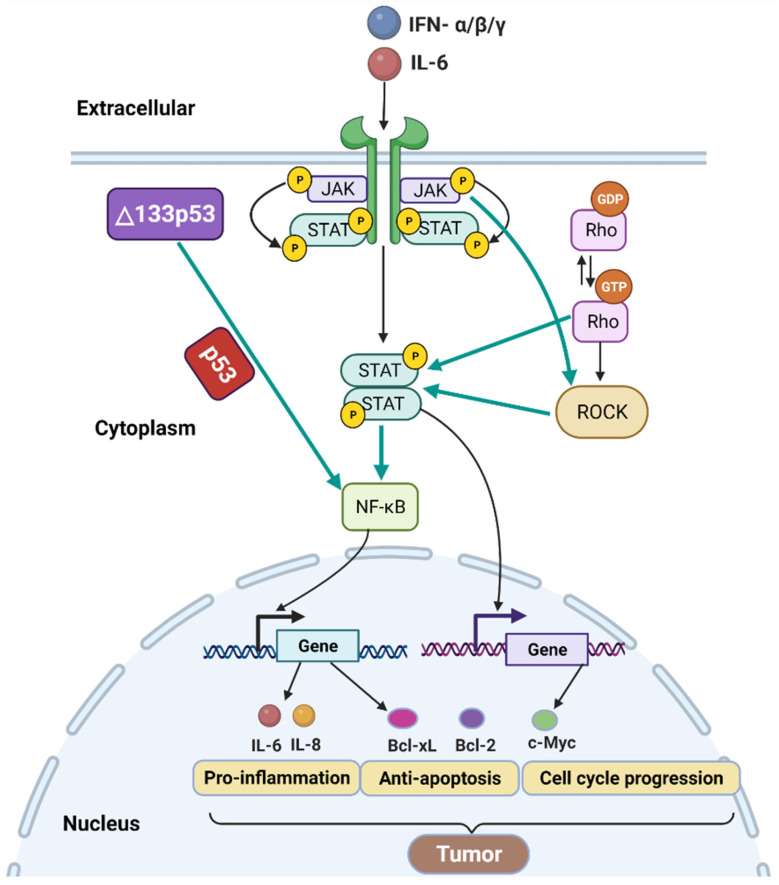Figure 4.
Mechanisms of Δ133p53-induced tumor development via several signaling pathways, including NF-κB, JAK-STAT, RhoA-ROCK, and IFN. In cancer cells, Δ133p53 expression induces the expression of NF-κB target genes, including IL-6, a key factor for activating phosphorylation of STAT. In addition, type I and II IFNs IFN-α, IFN-β, and IFN-γ can also activate the JAK-STAT signaling. STAT can stimulate the transcription of its target genes including Bcl-xL, Bcl-2, and c-Myc. STAT can also activate NF-κB. The activated NF-κB can also induce the transcription of various target genes, such as IL-6, IL-8, Bcl-xL, Bcl-2, and c-Myc. The RhoA-ROCK signaling pathway can interact with the JAK-STAT signaling pathway, resulting in increased phosphorylation of STAT. These pathways regulate genes involved in several processes, such as pro-inflammation, anti-apoptosis, and cell cycle progression, all of which aid in tumor development.

